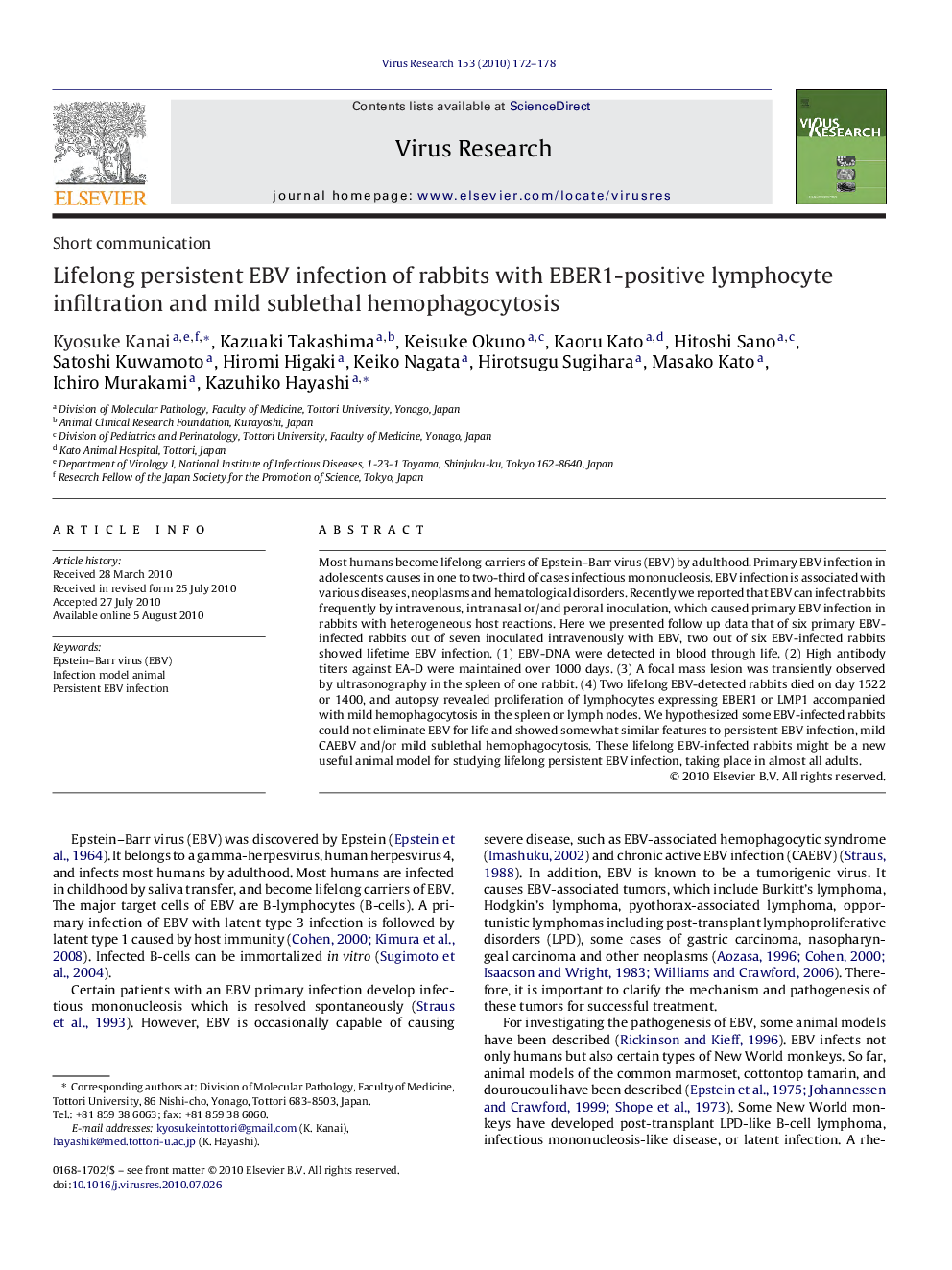| Article ID | Journal | Published Year | Pages | File Type |
|---|---|---|---|---|
| 3429345 | Virus Research | 2010 | 7 Pages |
Most humans become lifelong carriers of Epstein–Barr virus (EBV) by adulthood. Primary EBV infection in adolescents causes in one to two-third of cases infectious mononucleosis. EBV infection is associated with various diseases, neoplasms and hematological disorders. Recently we reported that EBV can infect rabbits frequently by intravenous, intranasal or/and peroral inoculation, which caused primary EBV infection in rabbits with heterogeneous host reactions. Here we presented follow up data that of six primary EBV-infected rabbits out of seven inoculated intravenously with EBV, two out of six EBV-infected rabbits showed lifetime EBV infection. (1) EBV-DNA were detected in blood through life. (2) High antibody titers against EA-D were maintained over 1000 days. (3) A focal mass lesion was transiently observed by ultrasonography in the spleen of one rabbit. (4) Two lifelong EBV-detected rabbits died on day 1522 or 1400, and autopsy revealed proliferation of lymphocytes expressing EBER1 or LMP1 accompanied with mild hemophagocytosis in the spleen or lymph nodes. We hypothesized some EBV-infected rabbits could not eliminate EBV for life and showed somewhat similar features to persistent EBV infection, mild CAEBV and/or mild sublethal hemophagocytosis. These lifelong EBV-infected rabbits might be a new useful animal model for studying lifelong persistent EBV infection, taking place in almost all adults.
